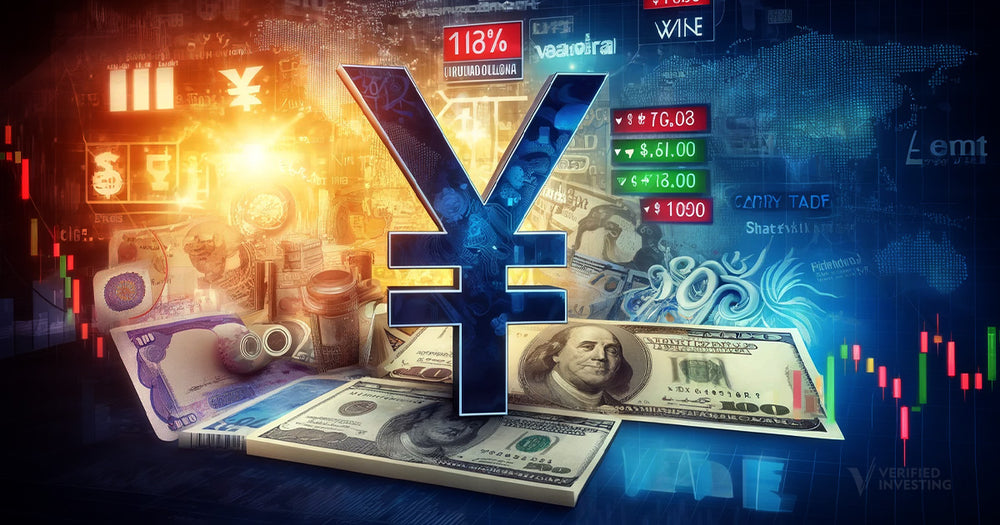What Is The Yen Carry Trade?

The yen carry trade is a forex trading strategy in which investors take advantage of low borrowing costs in Japan to fund investments in countries with higher interest rates. It involves borrowing money from a Japanese bank at or near 0% interest, converting the yen to dollars, and using it to purchase Treasuries or make other yield-bearing purchases overseas.
The yen/dollar pair is the world’s most popular carry trade. Traders made 18% in total returns on the yen/dollar carry trade in 2023, thanks to the Bank of Japan holding rates at -0.10% while the Fed hiked rates to 5.5%.
What Are The Advantages of the Yen Carry Trade?
Aside from unexpected currency movements, the yen carry trade is low risk unless you use leverage or use the money to invest in non-government assets. There is little risk that the US government won’t pay maturing Treasuries, making them a default choice for many trades. Profits in the yen carry trade ballooned as the yen sank to 34-year lows in 2024.
When the Japanese loan in yen comes due, you repay it by liquidating your dollar-denominated assets and keeping the profits. The stability of the dollar relative to the yen makes the carry trade a source of steady income.
The sheer volume of the global yen carry trade has played a large role in keeping the yen weak. Trillions of dollars worth of yen are sold each year to buy dollars or euros for exporting Japanese loans to other countries. The steady downward pressure on the yen means most of the forex risk is on the other side of the trade.
Aside from an interest rate hike, the Bank of Japan can do little to seriously disrupt the yen carry trade, though a forceful currency intervention could temporarily increase volatility and reduce profits.
What Are The Disadvantages of the Yen Carry Trade?
The yen carry trade seems simple, but the specifics of each trade require extensive knowledge and deep pockets. Yen carry trades are deeply leveraged to boost returns. They are generally not hedged, as that would eat into any gains realized. Therefore, they are not for the meek or inexperienced trader.
Risk in yen carry trades comes primarily from changes in exchange rates, which are heavily influenced by central bank policy. In March 2024, the Bank of Japan raised interest rates above zero for the first time since 2011, while other central banks began cutting rates. This reduced the attractiveness of the yen carry trade as profit margins were squeezed.
Unwinding large numbers of carry trades strengthens the yen while weakening the partner currency, as traders sell dollars, euros, or pounds and buy yen to pay off Japanese-originated loans. In large volumes, this can further reduce currency spreads and lead to the unwinding of more carry trades.
Another disadvantage the yen carry trade faces is the possibility of a surge in overseas Japanese investments coming back home if the BoJ raises rates while other major central banks continue to cut. This repatriation of Japanese assets would strengthen the yen, just as the unwinding of carry trades would.
Trading involves substantial risk. All content is for educational purposes only and should not be considered financial advice or recommendations to buy or sell any asset. Read full terms of service.




